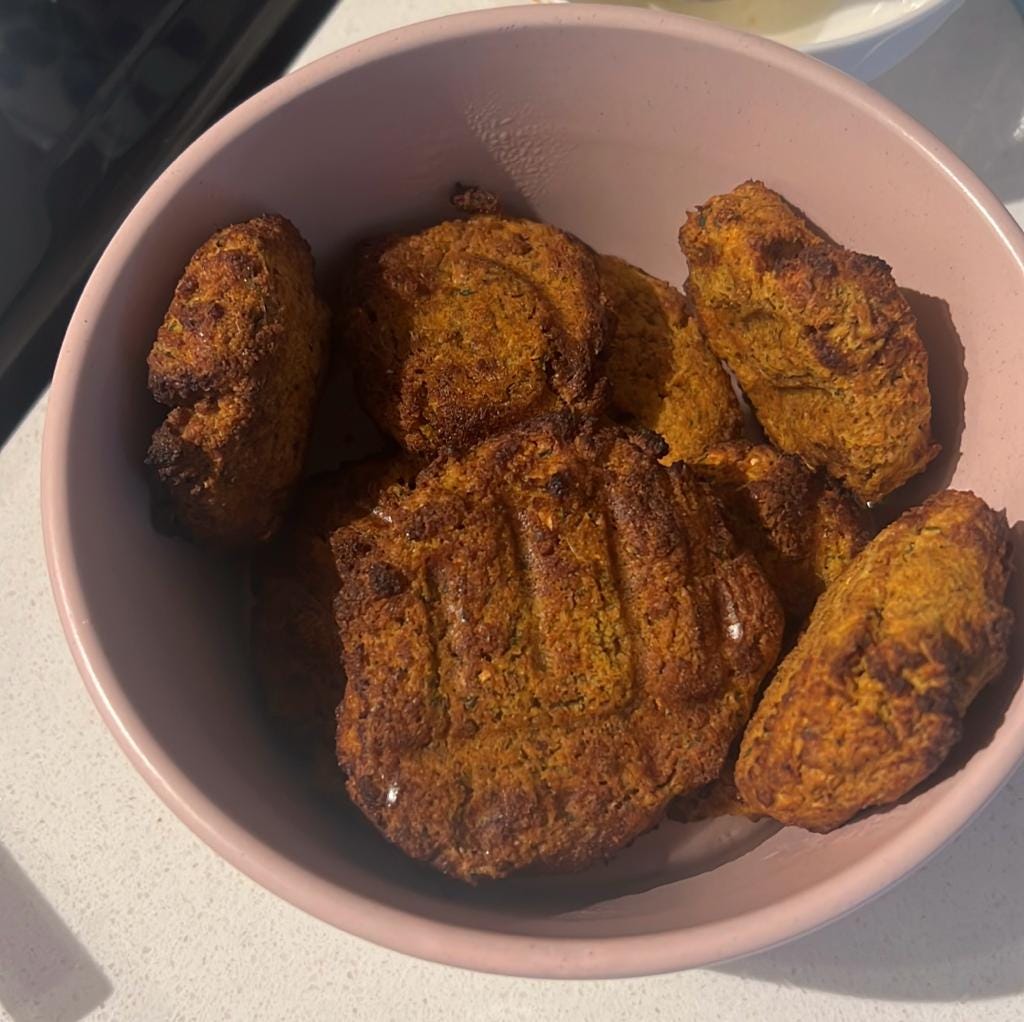Galouti Kebabs
This week I am curious about Galouti Kebabs. I was looking for items to cook for a Diwali potluck party and hence bumped into a video by Ranveer Brar where he cooked something called “Veg Galouti Kebabs”. I wanted to know more about how to make Galouti Kebabs and upon further researching, I came across another video by Varun Inamdar.
Both the recipes looked interesting to try and thus commenced mine and my cousin Aashaka’s attempt to make our version of the Galouti Kebabs. So what exactly are Galouti Kebabs and whats its origin story?
Origins and Etymology
The term Kebab means roasted meat, and the Nawabs of Lucknow loved indulging in their Kebabs. One such Nawab, Asaf-ud-Daula was so fond of eating Kebabs that he grew obese, his health deteriorated and lost his teeth eventually1. The Nawab organized a Kebab making contest and announced that the creator of softest and most easily digestible Kebabs would win royal patronage2.
A chef called Haji Murad Ali won the competition, and the original recipe is said to have been made with 160 spices with ingredients such as finely minced buffalo meat, plain yoghurt, garam masala, crushed garlic, ground cardamom, powdered cloves, melted ghee, dried mint, small onions cut into rings, vinegar, saffron, rose water, sugar, and lime3.
Apparently Haji Murad Ali had only one hand and lost his other hand while playing kites, and hence his version of Kebabs came to be known as “Tunde Ke Kebab”. The word “tunde” being a colloquial slang for a person without an arm. The Kebabs eventually came to be known as Galouti kebabs, where Galouti is derived from the word “Gilawat”, meaning something that is very soft and melts in mouth.
How did we make Galouti Kebabs?
We first boiled Rajma, roasted cashew nuts in ghee and blended both the ingredients in a blender. The first mistake we made was that we had boiled Rajma a few hours in advance and hence most of the moisture was drained out, forcing us to add exttra water to blend the mixture.
We then added grated ginger, turmeric powder, chilli power, garam masala, salt, yoghurt, salt and saffron to make the Galouti mix. We wanted to make a Jain friendly version and thus avoided adding garlic and elephant yams to the mix.
We added gram flour for binding and since we had added extra water, the Galouti mixture was soggy and hence we had to add extra gram flour to make the mixture less soggy. This eventually gave an aftertaste and also mellowed the other spices we had added.
The other mistake we made was to Air Fry the whole thing, and this entire process took us almost seven hours. The process was quite fun and the end output was decent-ish, but in hindsight - Air Fryed Galouti kebabs was a bad potluck idea, especially when making something complicated for the first time. But who am I, if not a gambler?
- -
So this week, I was curious about Galouti Kebabs? Do subscribe to my blog to read about different things I am curious about every week. My name is Kushal and I currently work as a Senior Product Manager at SoFi. I also do writing, quizzing, podcasting and standup comedy for fun.






